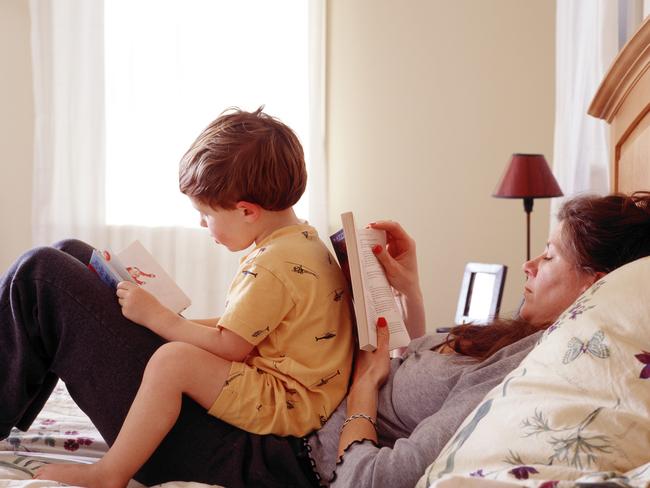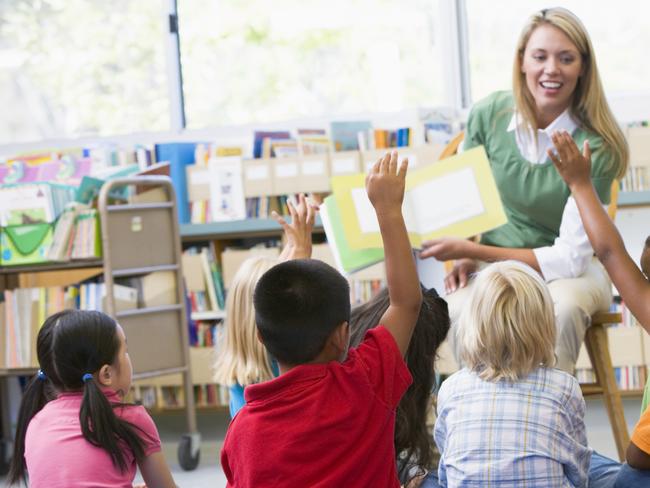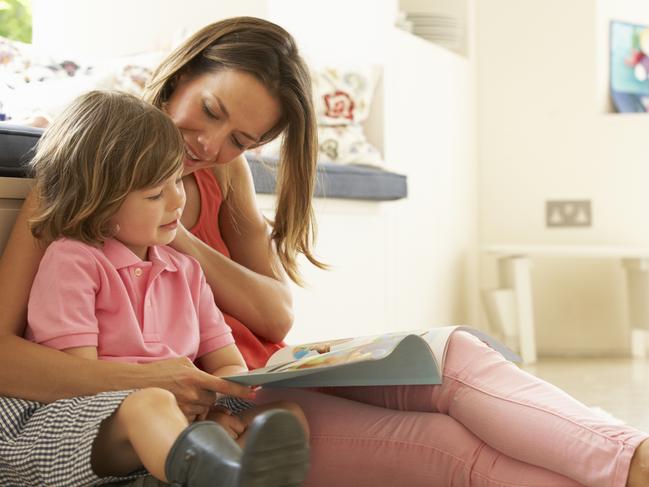Eleven questions about phonics teaching method change answered
Victorian public schools will move to a “back-to-basics” approach for teaching kids how to read under a major change from next year. Here’s what phonics is, how it works and why it’s needed.
Victoria
Don't miss out on the headlines from Victoria. Followed categories will be added to My News.
All Victorian public schools will teach phonics from next year as the government implements a back-to-basics education approach in a bid to improve young children’s literacy.
But what is phonics and how is it different to how reading is now taught in some schools? What does the change mean for students, teachers and parents?
Here are the answers to key questions on phonics.

What is the announcement?
The government has announced an updated Teaching and Learning Model for all state schools, to be implemented from next year, which focuses on what’s known as “explicit teaching”, with students from prep to grade 2 to be taught reading using phonics.
What is phonics in a nutshell?
Phonics explicitly teaches the relationship between sounds and letters to read words, which differs from other common teaching methods that use pictures and context to guess words.
Phonics help students break up words into individual sounds.
Why the change?
Victorian Education Minister Ben Carroll has said the move follows research by the Australian Education Research Organisation and independent expert think tank the Grattan Institute, which shows explicit teaching works best for the largest number of students.
The policy change means state schools in Victoria will all use a phonics approach to teaching reading, which brings Victoria into line with other states, such as NSW and South Australia, which already have a uniform approach.
Grattan Institute education program director Dr Jordana Hunter has said in a typical classroom of 24 students, eight can’t read well — which means schools have been failing kids.
“It’s a preventable tragedy – the reason most of those students can’t read well enough is that we aren’t teaching them well enough,” she said.

Decades of disagreement about how to best teach reading in the past has led to students missing out on best-practice teaching, with learning to read well coming down to luck, rather than design, the Grattan Institute says in its February 2024 report.
What is the evidence supporting the change?
The Grattan report says that students who struggle with reading are more likely to fall behind their classmates, become disruptive and drop out of school. They are then more likely to end up unemployed or in poorly paid jobs.
A key cause of the reading problem in schools is decades of disagreement about how to teach reading, Grattan says, “but the evidence is now clear … the ‘whole language’ approach – which became popular in the 1970s and is based on the idea that learning to read is an easy, natural, unconscious process – does not work for all students. Its remnants should be banished from Australian schools. Instead, all schools should use the ‘structured literacy’ approach right through school, which includes a focus on phonics in the early years”.
How badly are kids reading now?
Australia has an unacceptably high number of children and adolescents who fail to reach minimum proficiency standards in reading, so something in schools must change, the Grattan report says.
According to 2023 NAPLAN results, about one in three Australian students are not meeting grade-level expectations in reading.
“Australia has too many ‘instructional casualties’ — students who should read proficiently but haven’t been taught well,” Grattan says.
“At the same time, not enough Australian students are excelling in reading. According to PISA (the OECD’s Program for International Student Assessment), in 2022 only 12 per cent of Australian students were high performers in reading, compared to 22 per cent in Singapore.”

Why will phonics help?
Grattan says students need to learn to sound out the letters of each word, and teachers should read rich literature aloud to their class. Once students have mastered decoding new words, they still need explicit teaching to build up their background knowledge and vocabulary, so they can comprehend what they read, which is the ultimate goal of reading.
How does phonics work?
Phonics is a way of teaching children how to read and write. It helps children hear, identify and use different sounds that distinguish one word from another.
Written language can be compared to a code, so knowing the sounds of individual letters and how those letters sound when they’re combined will help children decode words as they read.
Understanding phonics will also help children know which letters to use when they are writing words.
Phonics involves matching the sounds of spoken English with individual letters or groups of letters. For example, the sound k can be spelled as c, k, ck or ch.
Literacy expert Dr Jennifer Buckingham has said having children memorise word lists is not enough, and explicit, methodical phonics instruction is required.
“The writing system needs to be explained really carefully. There’s a sound element, but there’s a meaning element that is baked into our writing system, as well,” she has explained.
“Spelling choices that we make depend in part on the meaning of the word, which adds a layer of complexity that is not straightforward for a lot of kids.”

Why is decoding words so important?
The research evidence shows that systematically teaching students to decode the letter-sound relationships in words (i.e. phonics) in the early years of primary school ensures all students have the best chance to learn to read.
How long will be spent teaching phonics in public school classrooms?
Teachers will spend a minimum of 25 minutes a day on explicit teaching of phonics and phonemic awareness in classrooms.
How will it help teachers?
Education program director at the Grattan Institute Jordana Hunter says its will make life a lot easier for teachers.
“I think it will really help clear up a lot of confusion in schools. We’re seeing a real mix in approaches to teaching reading in Victorian schools for decades now and this is really going to mean that teachers can have confidence that they can adopt best practice,” Dr Hunter told ABC Radio Melbourne.
“We should definitely see an improvement in the proportion of students that meet that proficient benchmark in NAPLAN in grade three.”
How can parents help their kids to read using phonics?
Parents can support their child by taking time to talk about the stories they read together, the language and words used in the book, as well as the sounds of letters in words.



